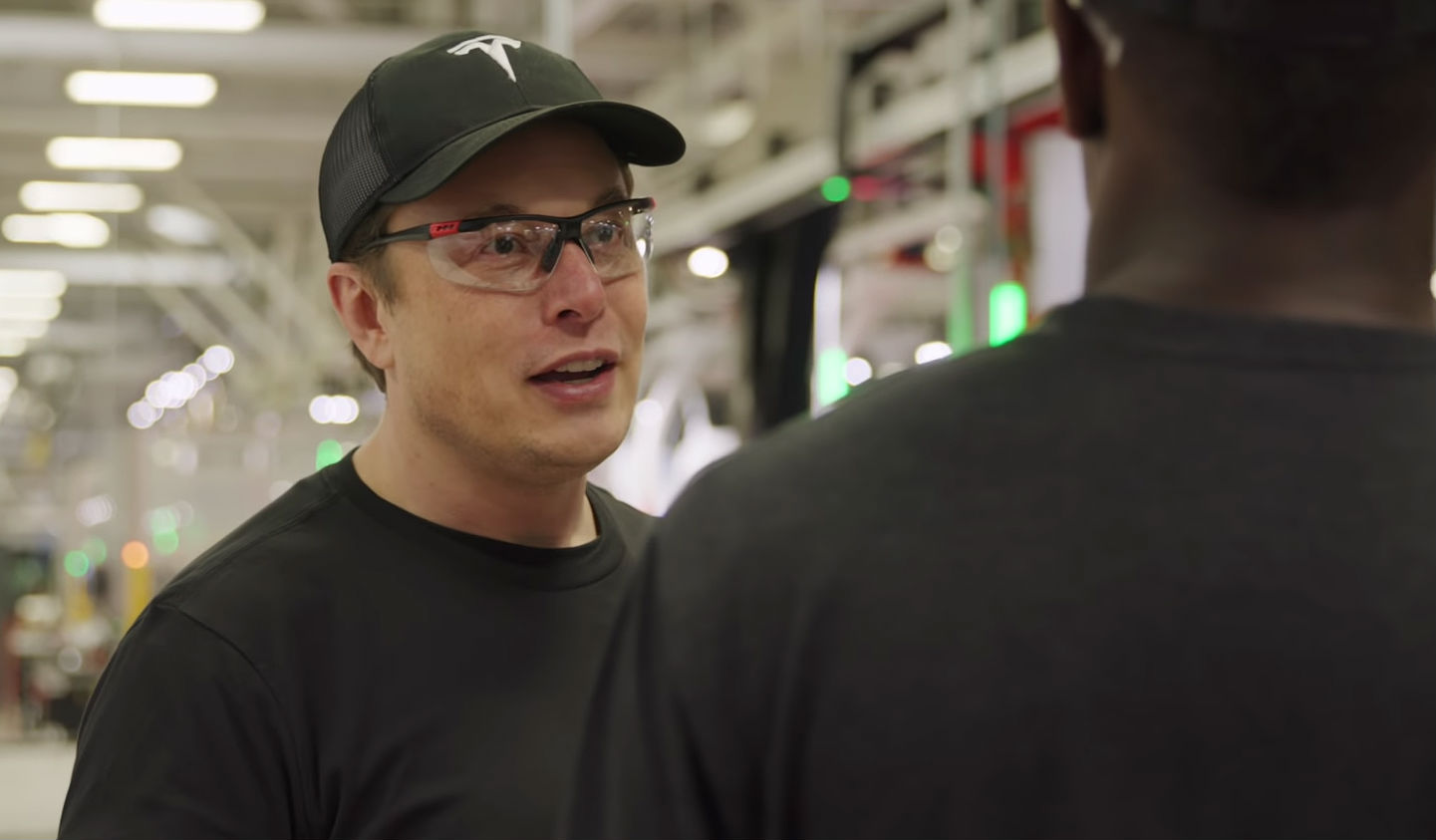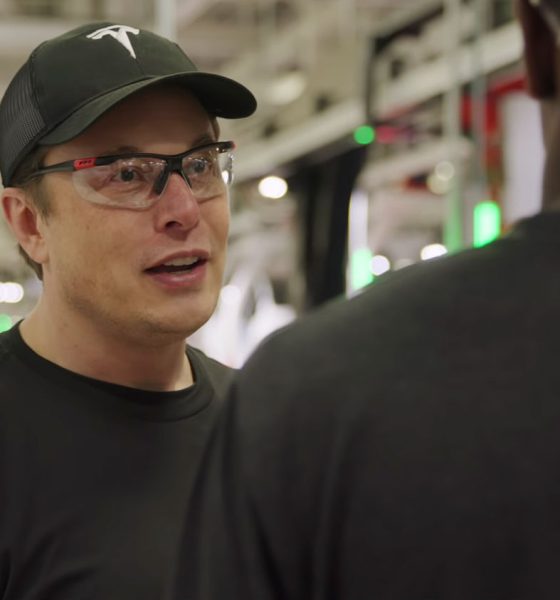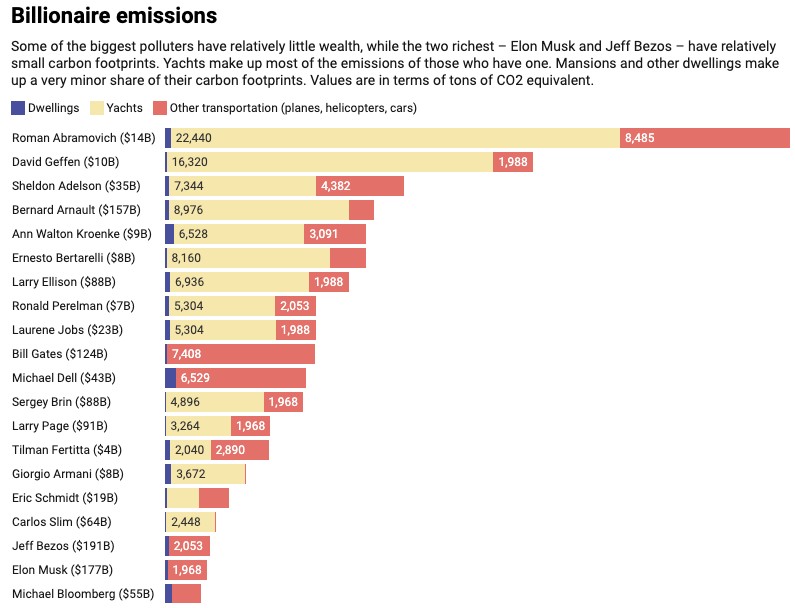

News
Elon Musk walks the walk by consuming far less carbon than other billionaires
Elon Musk may be trading places with Amazon founder Jeff Bezos these days for the title of the world’s richest person by net worth, but the Tesla and SpaceX CEO also holds a unique place among his fellow billionaires. Based on estimates from anthropologists from Indiana University, Elon Musk may very well be one of the billionaires with the smallest carbon footprint.
Critics of Elon Musk would argue that the Tesla and SpaceX CEO’s carbon footprint is excessive due to his frequent travels with his private jet. However, Richard Wilk, the director of the Open Anthropology Institute at Indiana University, and Beatriz Barros, a Ph.D. candidate in anthropology at Indiana University, noted in an analysis that Musk’s carbon footprint is actually quite small relative to his fellow billionaires. This is because, unlike other billionaires, Musk owns no luxury superyachts or custom-made, sprawling mansions.

Wilk and Barros opted to analyze a number of billionaires from the 2020 Forbes List, particularly those whose consumption is public knowledge. This excluded a good number of the super-rich in Asia and the Middle-East, but it still provided a good sample of billionaires from across the globe. To estimate each billionaire’s carbon footprint, the anthropologists used data from the US Energy Information Administration and Carbon Footprint. Together with some extensive research, this allowed the pair to estimate the annual CO2 emissions of each house, aircraft, yacht, and vehicle publicly declared by each billionaire.
On average, US residents pollute about 15 tons of CO2 per year as of 2018, though the average global footprint per person is smaller at just about 5 tons annually. The 20 billionaires who were included in the study, for their part, contributed an average of 8,190 tons of CO2 in 2018. But even among this list, some billionaires polluted significantly more than others. And as it turned out, those who owned massive luxury yachts tend to consume significantly more than those who did not.
Roman Abramovich, the owner of London’s Chelsea Football Club and a man who made most of his $19 billion fortune trading oil and gas, proved to be the biggest polluter in the anthropologists’ list with at least 33,859 metric tons of CO2 emissions in 2018. This is due in no small part to his luxury superyacht, the Eclipse, which at 162.5 meters bow to stern is practically a small, private cruise ship. He also travels across the globe in a custom-designed Boeing 767 with a 30-seat dining room, as well as his Gulfstream G650 jet. Abramovich also uses two helicopters and a submarine on his yacht. On top of this, the oil and gas magnate boasts several properties, such as a 28-hectare estate in St. Barts that once belonged to David Rockefeller.
Bill Gates, a huge advocate for sustainability, consumes far less carbon than Abramovich, but his emissions still tower over those of Elon Musk. Gates maintains a $127 million estate in Medina, Washington named Xanadu, which covers 6,131 square meters and amenities like a 23-car garage, a 20-person cinema, and 24 bathrooms. Gates also owns a horse farm, four private jets, a seaplane, and several helicopters. The anthropologists estimate that Gates’ annual carbon footprint stands at 7,493 tons, mostly due to his flying.
For his part, Elon Musk owns no yachts, and the CEO has noted that he does not take many vacations. The Tesla and SpaceX CEO was estimated to have a rather billionaire-modest carbon footprint of 2,084 tons in 2018, which was hundreds of times higher than the average American but significantly smaller than his fellow billionaires. Interestingly enough, Musk’s carbon footprint may have also gotten considerably lower as of late, considering that he sold all of his houses in 2020 and he promised to divest his worldly possessions. Ultimately, Musk, who is currently worth about $190 billion or ten times that of billionaires like Abramovich, proves that even the super-rich can make choices to ensure that they live as sustainably as possible.
Read Wilk and Barros’ analysis of billionaires’ carbon footprint here.
Don’t hesitate to contact us for news tips. Just send a message to tips@teslarati.com to give us a heads up.

News
Tesla starts showing how FSD will change lives in Europe
Local officials tested the system on narrow country roads and were impressed by FSD’s smooth, human-like driving, with some calling the service a game-changer for everyday life in areas that are far from urban centers.

Tesla has launched Europe’s first public shuttle service using Full Self-Driving (Supervised) in the rural Eifelkreis Bitburg-Prüm region of Germany, demonstrating how the technology can restore independence and mobility for people who struggle with limited transport options.
Local officials tested the system on narrow country roads and were impressed by FSD’s smooth, human-like driving, with some calling the service a game-changer for everyday life in areas that are far from urban centers.
Officials see real impact on rural residents
Arzfeld Mayor Johannes Kuhl and District Administrator Andreas Kruppert personally tested the Tesla shuttle service. This allowed them to see just how well FSD navigated winding lanes and rural roads confidently. Kruppert said, “Autonomous driving sounds like science fiction to many, but we simply see here that it works totally well in rural regions too.” Kuhl, for his part, also noted that FSD “feels like a very experienced driver.”
The pilot complements the area’s “Citizen Bus” program, which provides on-demand rides for elderly residents who can no longer drive themselves. Tesla Europe shared a video of a demonstration of the service, highlighting how FSD gives people their freedom back, even in places where public transport is not as prevalent.
What the Ministry for Economic Affairs and Transport says
Rhineland-Palatinate’s Minister Daniela Schmitt supported the project, praising the collaboration that made this “first of its kind in Europe” possible. As per the ministry, the rural rollout for the service shows FSD’s potential beyond major cities, and it delivers tangible benefits like grocery runs, doctor visits, and social connections for isolated residents.
“Reliable and flexible mobility is especially vital in rural areas. With the launch of a shuttle service using self-driving vehicles (FSD supervised) by Tesla in the Eifelkreis Bitburg-Prüm, an innovative pilot project is now getting underway that complements local community bus services. It is the first project of its kind in Europe.
“The result is a real gain for rural mobility: greater accessibility, more flexibility and tangible benefits for everyday life. A strong signal for innovation, cooperation and future-oriented mobility beyond urban centers,” the ministry wrote in a LinkedIn post.
News
Tesla China quietly posts Robotaxi-related job listing
Tesla China is currently seeking a Low Voltage Electrical Engineer to work on circuit board design for the company’s autonomous vehicles.

Tesla has posted a new job listing in Shanghai explicitly tied to its Robotaxi program, fueling speculation that the company is preparing to launch its dedicated autonomous ride-hailing service in China.
As noted in the listing, Tesla China is currently seeking a Low Voltage Electrical Engineer to work on circuit board design for the company’s autonomous vehicles.
Robotaxi-specific role
The listing, which was shared on social media platform X by industry watcher @tslaming, suggested that Tesla China is looking to fill the role urgently. The job listing itself specifically mentions that the person hired for the role will be working on the Low Voltage Hardware team, which would design the circuit boards that would serve as the nervous system of the Robotaxi.
Key tasks for the role, as indicated in the job listing, include collaboration with PCB layout, firmware, mechanical, program management, and validation teams, among other responsibilities. The role is based in Shanghai.
China Robotaxi launch
China represents a massive potential market for robotaxis, with its dense urban centers and supportive policies in select cities. Tesla has limited permission to roll out FSD in the country, though despite this, its vehicles have been hailed as among the best in the market when it comes to autonomous features. So far, at least, it appears that China supports Tesla’s FSD and Robotaxi rollout.
This was hinted at in November, when Tesla brought the Cybercab to the 8th China International Import Expo (CIIE) in Shanghai, marking the first time that the autonomous two-seater was brought to the Asia-Pacific region. The vehicle, despite not having a release date in China, received a significant amount of interest among the event’s attendees.
Elon Musk
Elon Musk and Tesla AI Director share insights after empty driver seat Robotaxi rides
The executives’ unoccupied tests hint at the rapid progress of Tesla’s unsupervised Robotaxi efforts.

Tesla CEO Elon Musk and AI Director Ashok Elluswamy celebrated Christmas Eve by sharing personal experiences with Robotaxi vehicles that had no safety monitor or occupant in the driver’s seat. Musk described the system’s “perfect driving” around Austin, while Elluswamy posted video from the back seat, calling it “an amazing experience.”
The executives’ unoccupied tests hint at the rapid progress of Tesla’s unsupervised Robotaxi efforts.
Elon and Ashok’s firsthand Robotaxi insights
Prior to Musk and the Tesla AI Director’s posts, sightings of unmanned Teslas navigating public roads were widely shared on social media. One such vehicle was spotted in Austin, Texas, which Elon Musk acknowleged by stating that “Testing is underway with no occupants in the car.”
Based on his Christmas Eve post, Musk seemed to have tested an unmanned Tesla himself. “A Tesla with no safety monitor in the car and me sitting in the passenger seat took me all around Austin on Sunday with perfect driving,” Musk wrote in his post.
Elluswamy responded with a 2-minute video showing himself in the rear of an unmanned Tesla. The video featured the vehicle’s empty front seats, as well as its smooth handling through real-world traffic. He captioned his video with the words, “It’s an amazing experience!”
Towards Unsupervised operations
During an xAI Hackathon earlier this month, Elon Musk mentioned that Tesla owed be removing Safety Monitors from its Robotaxis in Austin in just three weeks. “Unsupervised is pretty much solved at this point. So there will be Tesla Robotaxis operating in Austin with no one in them. Not even anyone in the passenger seat in about three weeks,” he said. Musk echoed similar estimates at the 2025 Annual Shareholder Meeting and the Q3 2025 earnings call.
Considering the insights that were posted Musk and Elluswamy, it does appear that Tesla is working hard towards operating its Robotaxis with no safety monitors. This is quite impressive considering that the service was launched just earlier this year.








